What is lawn rust? Expert advice for easily preventing and treating the issue
Discover the symptoms to watch out for, and learn how to prevent spreading the problem to other areas of your lawn
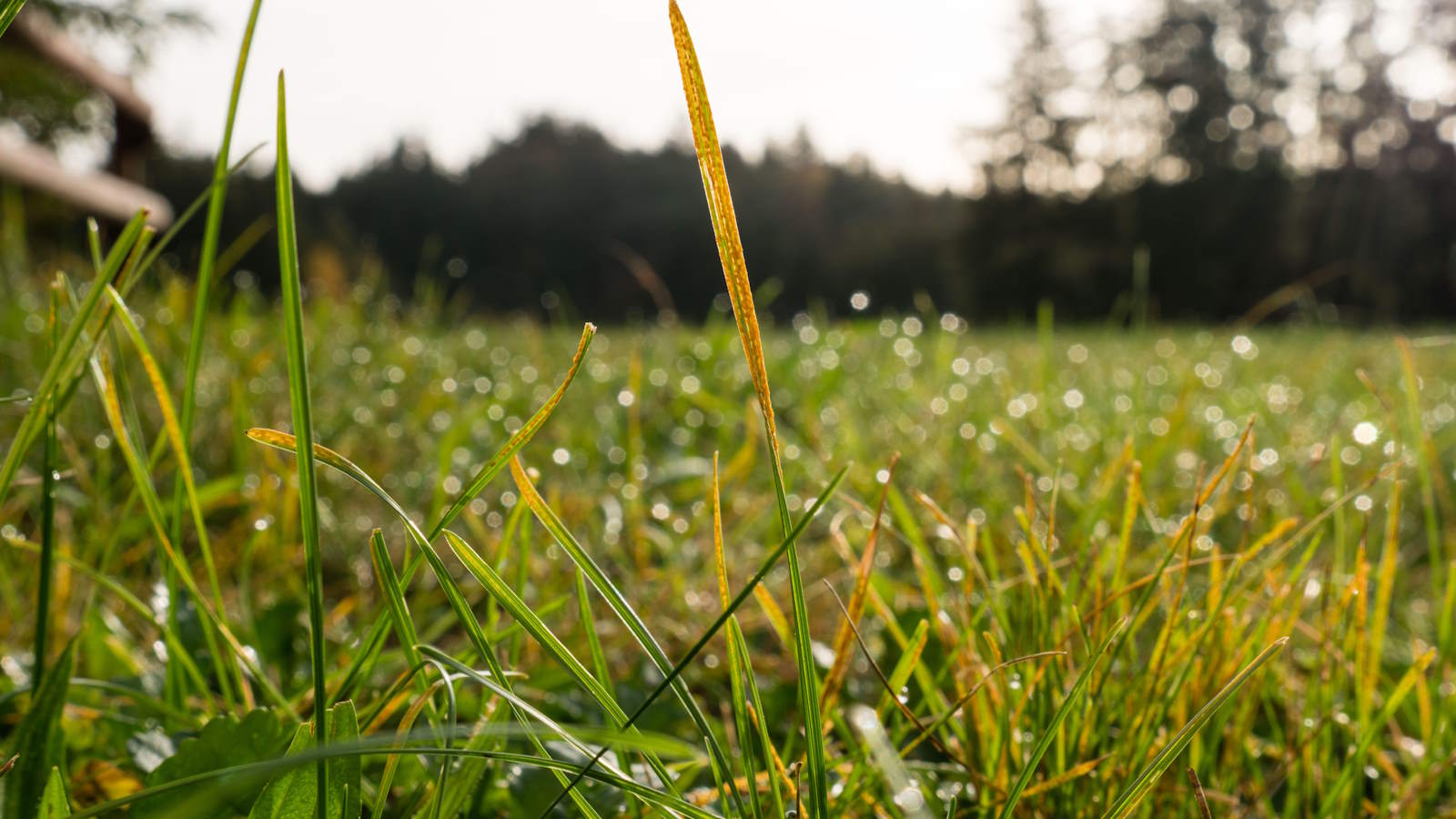

Lawn rust is a common issue that causes grass to discolor and have an orangey-red appearance from late summer onwards. A wide range of plants can suffer from rust spread by fungal spores and, when it affects grass, it can cause a lawn to look unsightly.
There are certain signs to keep an eye on to see if your grass is affected, as the spores may also stain your shoes and clothes while you are out and about in the backyard.
It is not all bad news though, as lawn rust is an issue that can be easily avoided with a good lawn care regime and, if it does appear on your grass, there are some simple ways to help stop it spreading and limit its impact on your lawn.
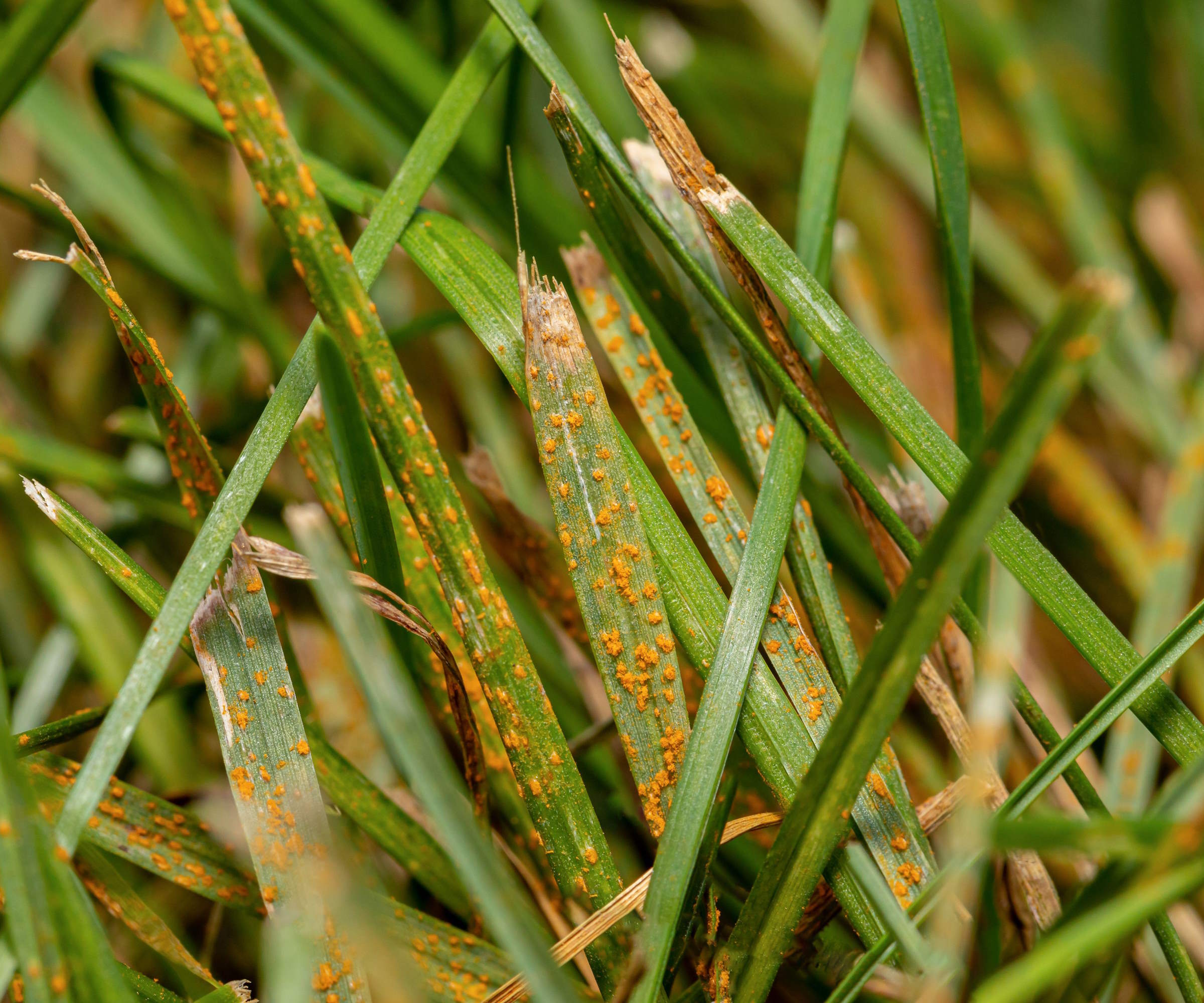
Lawn rust is evident by orange pustules on grass blades
What is lawn rust?
Lawn rust is a common fungal condition caused by several different types of fungus from the Puccinia and Uromyces genera. It is usually most prevalent in the months of late summer or early fall. Any type of turf can suffer from lawn rust, but it is the cool season grasses that are most susceptible to the issue.
Signs of lawn rust
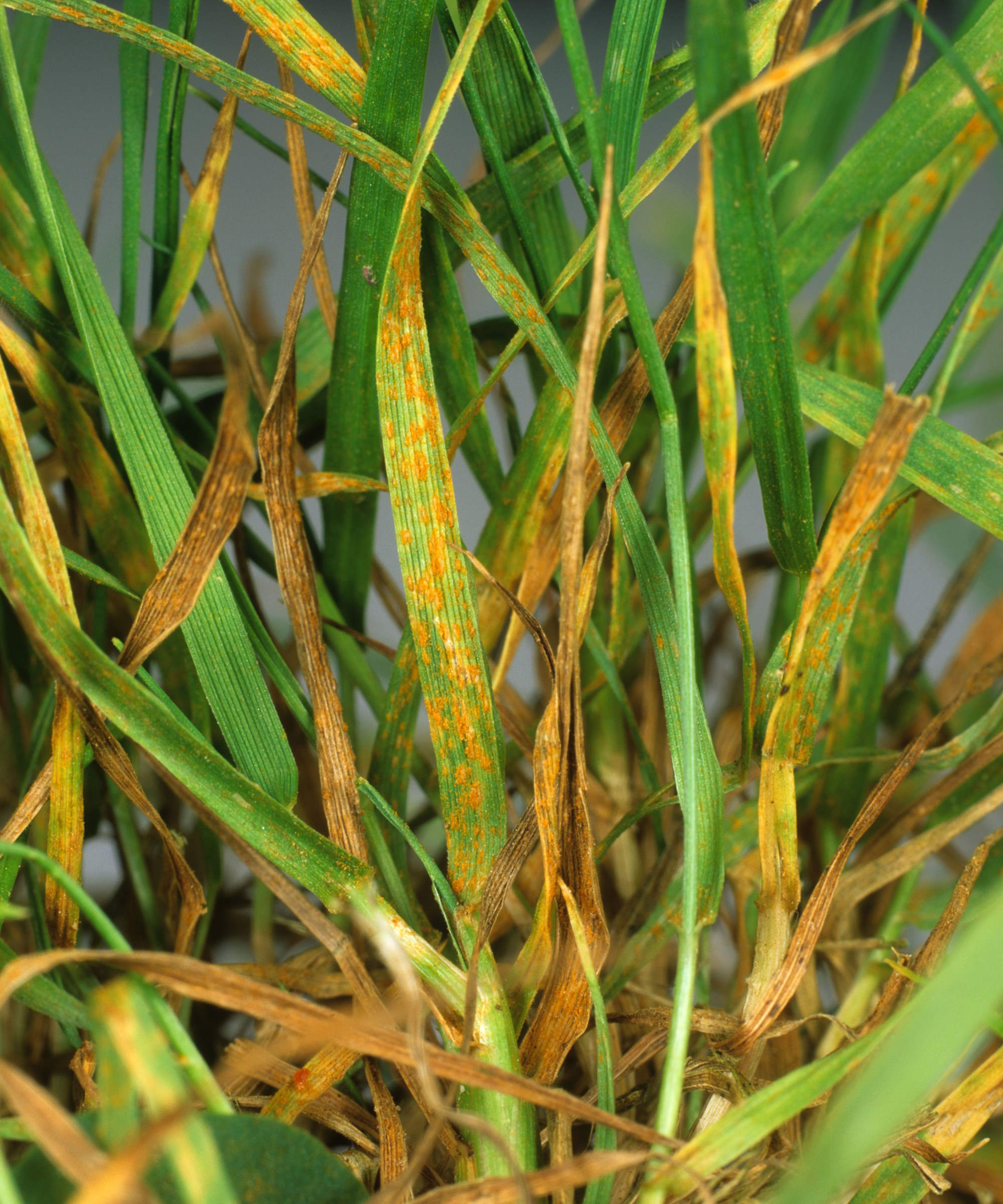
Lawn rust can be spread quickly by the fungal spores
Lawn rust often comes to the fore when the growth rate of the grass starts to slow down. This can either be due to the time of year, as a result of periods of hot weather, or when the nutrient levels of the lawn are low.
There are some tell-tale signs to look out for, however, it may be difficult to see them on the grass as the period of late summer and early fall tend to be times when you are mowing a lawn regularly - so the symptoms may be trickier to spot. It may be beneficial to pull some blades from out of your lawn to closely examine them if you suspect you have lawn rust.
Sarah Jameson, founder of Lawn Chick, says ’The first thing you’ll notice is the appearance of small, yellowish-orange to reddish-brown pustules on grass blades. These pustules burst, releasing powdery spores that give the grass a rusty appearance.’
It is those spores being released, either by wind, people, or animals, that spreads rust around the lawn. Indeed, you may notice the orange or red stains of spores on your shoes, clothes, or pets, after being outside in the yard.
Other symptoms of lawn rust may include your lawn looking unhealthy and weak, even potentially seeing bare patches of grass if there is a severe infection as the blades turn brown and shrink in size.

Sarah Jameson is the founder and owner of LawnChick.com, a trusted lawn care blog that educates millions of homeowners each year to help them achieve the greenest, healthiest lawn. Sarah’s blog is read by over 2 million homeowners each year and she is regularly cited as an expert source of lawn care knowledge by major publications.
How to prevent lawn rust
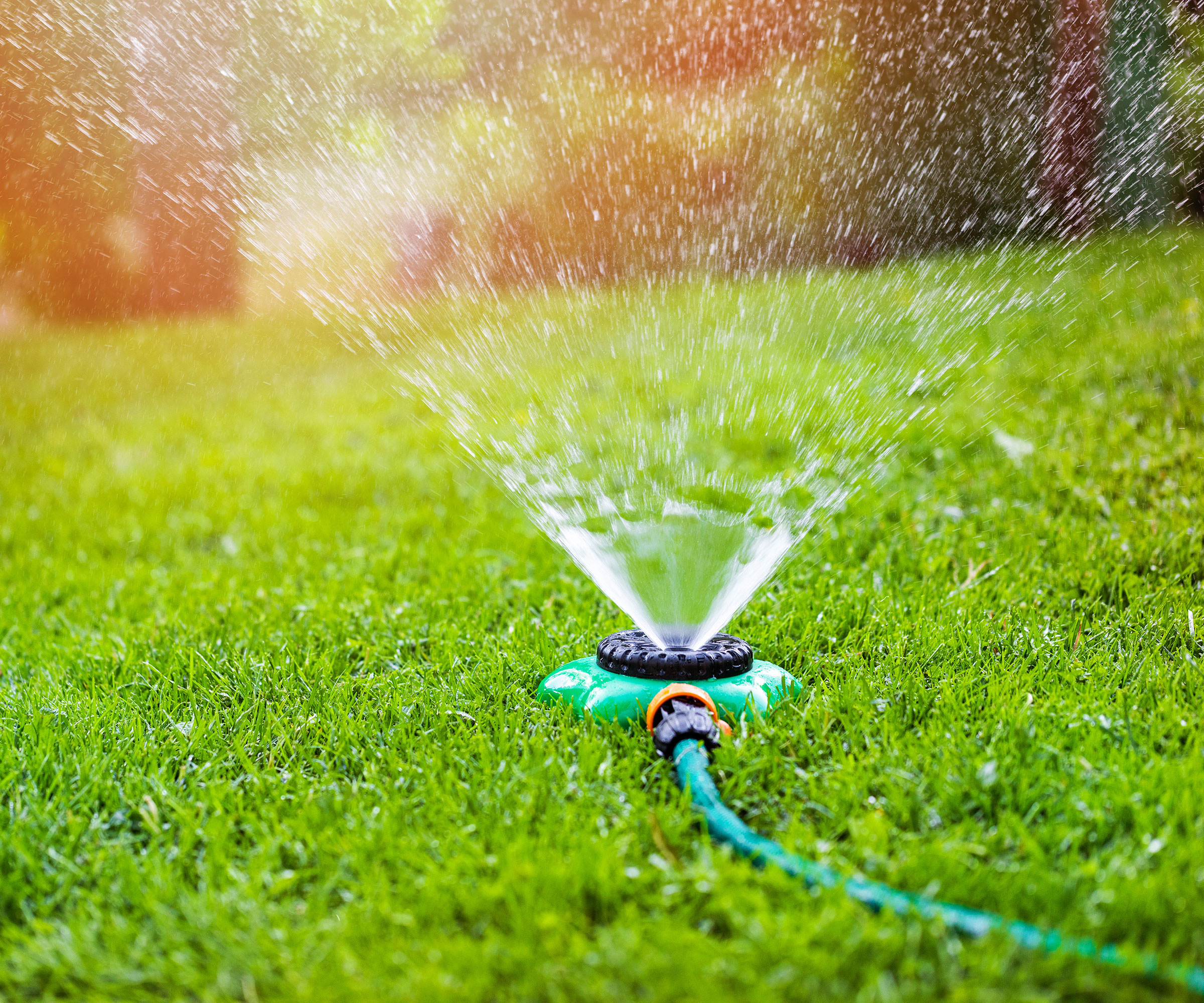
Watering is one method of combatting lawn rust
The good news is that there are simple ways to prevent lawn rust and most of them are common practice as part of a good and thorough lawn care regime. A lawn that is green and thick and healthy is less likely to get lawn rust.
That good maintenance routine includes watering grass as and when required, along with fertilizing a lawn throughout the season. When you water makes a difference and how long you water the lawn for each time should also come under consideration.
‘Prior preparation prevents poor performance. Instead of watering every day for short periods of time, water once or twice a week for long periods of time,’ says Tyler Graham, editor of The Lawn Review. ‘Also make sure you're giving your lawn a good feeding every 2 or 3 months from the start of spring to the end of fall.’
On top of watering and feeding, aerating a lawn and dethatching helps to prevent fungal diseases as it removes old decaying thatch that are a breeding ground for the spores to thrive in.
Sarah Jameson also recommends choosing rust-resistant varieties when planning to plant grass seed, whether it is for overseeding or starting a new lawn.
‘Many popular grass types are susceptible, and you really need to look for specific cultivars that offer good resistance,’ she adds. ‘In my New England lawn I use Jonathan Green’s Black Beauty Ultra and Black Beauty Original - both have a waxy coating on the leaves that make these grasses more resistant to disease and fungus.’
If you do plan to sow grass seed, the ideal times to sow are in spring or early fall. The heat of summer is not a recommended time to sow, as you will need to water the lawn a lot to get it to germinate.

Tyler Graham is the editor of The Lawn Review, a website and YouTube channel for DIY lawn enthusiasts
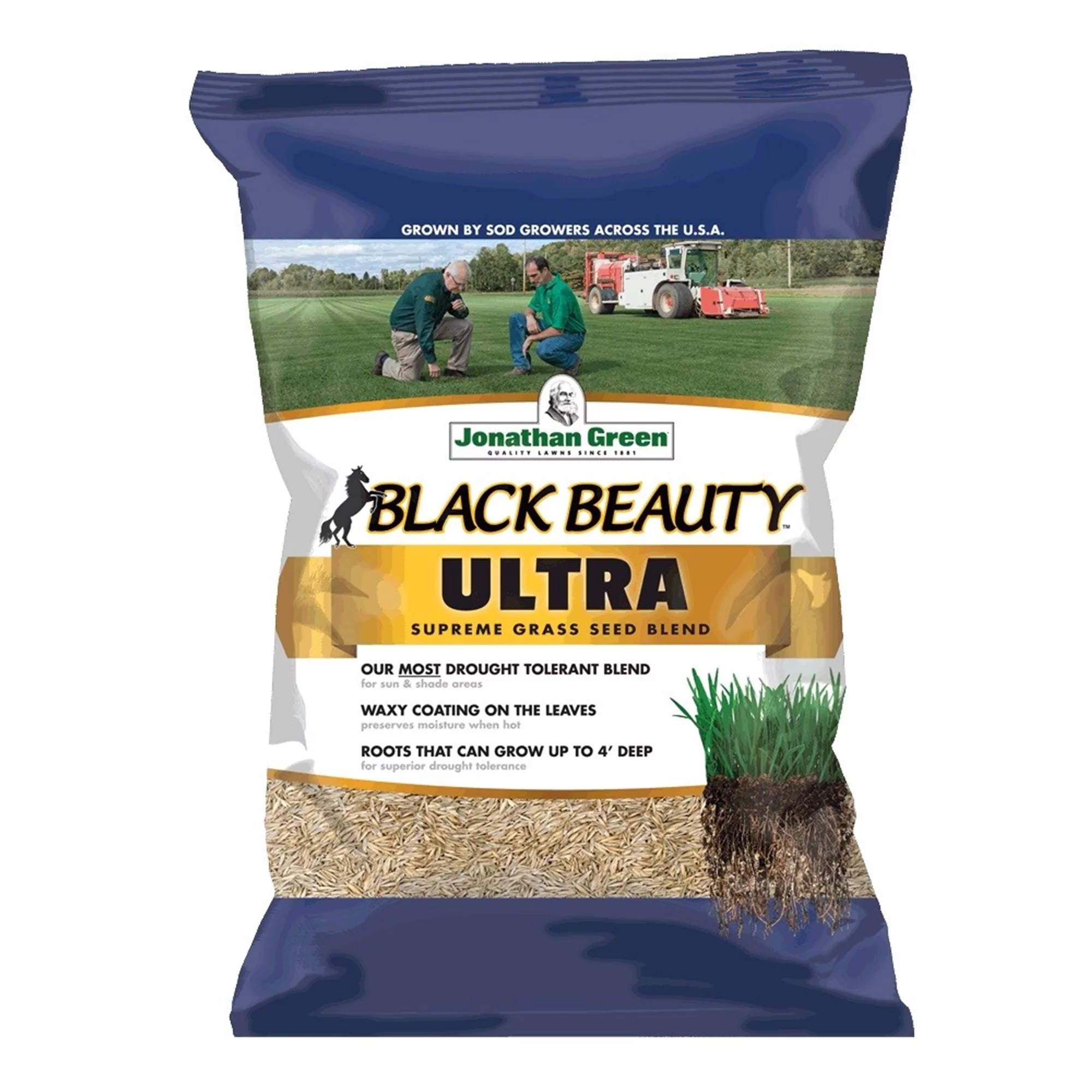
Black Beauty Ultra Grass Seed combines tall fescue varieties with Kentucky bluegrass and perennial ryegrass for fast germination
How to treat lawn rust
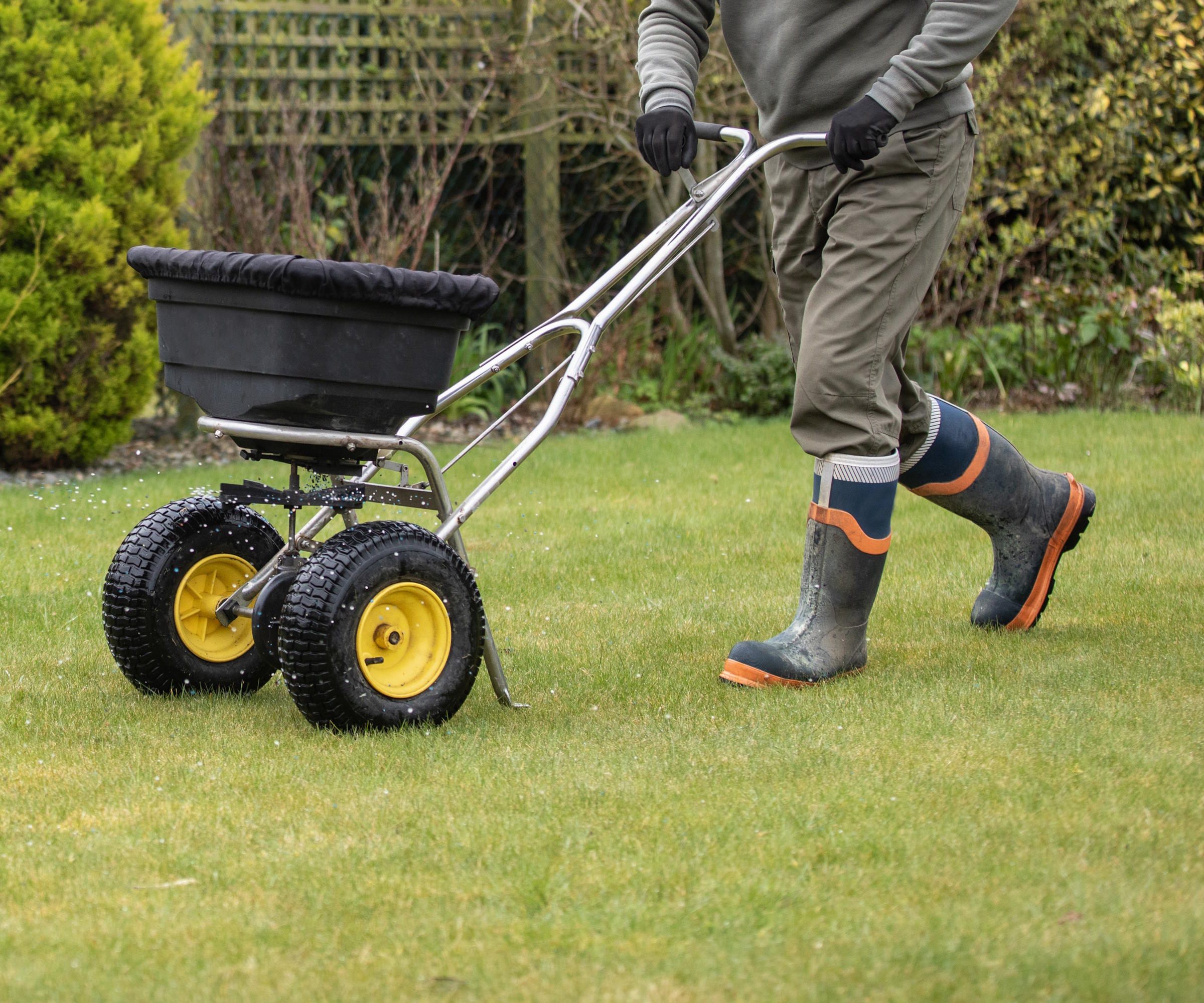
Feeding the grass can help combat lawn rust
There are simple ways to get rid of lawn rust if you do spot the symptoms on your lawn. When you do mow, always make sure to get rid of lawn clippings and do not add them to your compost. It is also important to rinse the lawn mower after use to prevent spreading the spores.
Many times lawn rust will disappear over time, especially when the temperatures drop, but that does not stop the lawn looking unsightly for the time when rust is obvious.
On how to treat lawn rust, Sarah Jameson recommends: ‘Once lawn rust appears, increasing nitrogen fertilization can help boost the grass's health and outgrow the fungus.
‘Most experts will tell you to spread a fungicide immediately, but in my view they should be a last resort due to their environmental impact. A good application of liquid nitrogen and bagging clippings for a few mows is what I recommend as a first plan of attack.’
One example of a high nitrogen lawn feed, as Sarah suggests using, is the Sunday Lawn Kickstart Fertilizer available at Walmart.
Fungicides can be used to address many lawn diseases, including the likes of dollar spot, snow mold, necrotic ring spot, powdery mildew on lawns, and fusarium patch, as well as a treatment for lawn rust. Fungicides are best only used on severe cases of rust that will not go away through other measures.
Tyler Graham says: ‘If you're like me and can't wait to let nature run it's course you can put down a fungicide to help speed along the process. I like Prophesy by The Andersons.’
The lawn expert claims that fungicides are often best put down ‘as a preventative measure’ in late spring to stop any fungal diseases affecting your lawn during the summer. He adds: ‘It's a whole lot easier to prevent something than it is to get rid of or fix something. But in a pinch this can be used as a reactive measure as well.’
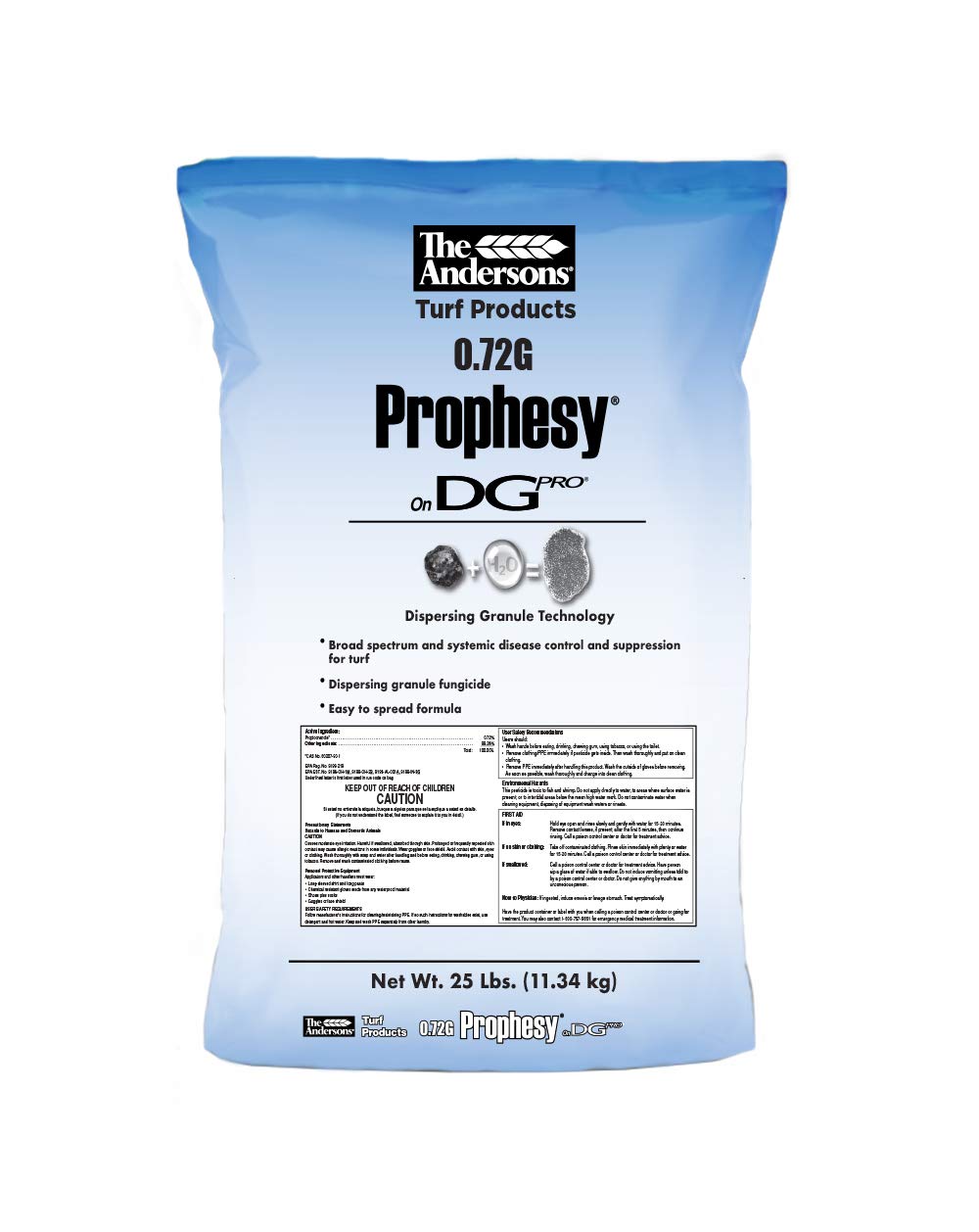
Prophesy Fungicide is formulated for use as a preventative measure or a curative treatment for fungal diseases, including rust and many others
FAQs
Will lawn rust go away on its own?
Lawn rust can resolve itself on its own through mowing, watering, and fertilizing, while the arrival of cooler weather in fall also creates less-than-favorable conditions for the fungus. However, doing nothing to address the outbreak of lawn rust is a lawn care mistake that makes it likely that the fungal issue returns again. It is best practice to have a good lawn care regime to help prevent any future outbreaks of rust.
Is lawn rust harmful to humans?
Lawn rust is not harmful to humans or animals. It is safe to walk on a lawn that has rust and the presence of an orange tint on the sole of your shoes, as a result of rust, may actually be a warning sign to look out for.
If you sow new grass seed to repair any damage from rust, it will be beneficial to use covers or bird scarers to stop birds eating grass seed. Birds are attracted to the seed as a source of food and they can easily ruin your plans to get a lovely freshly-sown lawn.
Sign up to the Homes & Gardens newsletter
Design expertise in your inbox – from inspiring decorating ideas and beautiful celebrity homes to practical gardening advice and shopping round-ups.

Drew’s passion for gardening started with growing vegetables and salad in raised beds in a small urban terrace garden. He has worked as a professional gardener in historic gardens and specialises in growing vegetables, fruit, herbs, and cut flowers as a kitchen gardener. That passion for growing extends to being an allotmenteer, garden blogger, and producing how-to gardening guides for websites. Drew was shortlisted for the New Talent of the Year award at the 2023 Garden Media Guild Awards.
-
 Potato, peas and chorizo warm salad
Potato, peas and chorizo warm saladSmoky, hearty and full of bold flavor, this potato, pea and chorizo salad is a hearty side guests will devour
By Alice Hart
-
 Sherry cosmopolitan
Sherry cosmopolitanThis sherry cosmopolitan is a lighter take on the classic cocktail, perfect for spring gatherings when you want something zesty and bright
By Alice Hart